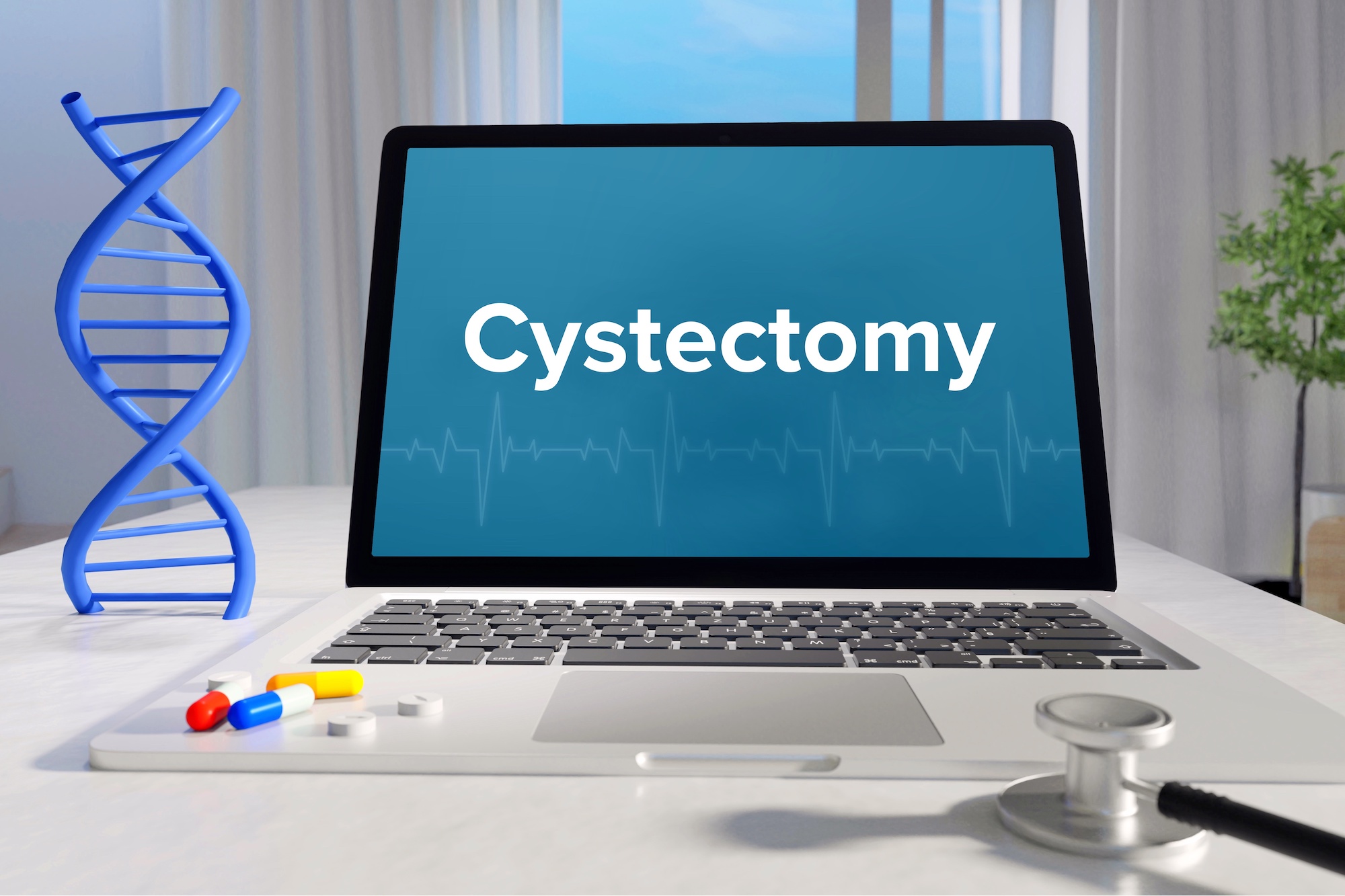A cystectomy is the surgical removal of the bladder (most commonly due to invasive bladder cancer) but can also include benign conditions such as interstitial cystitis or congenital abnormalities.
Types of Cystectomy
There are several types of cystectomy that may be performed. This depends on the severity of the damage to the bladder or invasiveness of the cancer:
Partial Cystectomy
This is a surgical procedure in which part of the bladder wall is removed and the remaining bladder is preserved. It is a common procedure performed for some benign conditions of the bladder wall.
Simple Cystectomy
In this procedure, the entire bladder is removed; however, the surrounding fatty tissue and pelvic organs are preserved. It is commonly performed for extensive benign lesions of the bladder which leave the bladder nonfunctional.
Radical Cystectomy
Primarily for bladder cancer patients, this is a surgical procedure in which the bladder and surrounding fatty tissues, as well as adjacent pelvic organs are removed (the prostate and seminal vesicles in men, the uterus, ovaries, and part of the vaginal wall in women).
Reconstructing the Urinary Tract
A cystectomy is major surgery. Because the bladder is removed in a cystectomy, surgeons must also create a new route for urine to leave your body. The goal is to give urine a place to collect and give the patient a way to eliminate it while preserving the highest quality of life. Several options exist to reconstruct the urinary tract:
Ileal Conduit
A piece of your small intestine is used to create a tube that connects your kidneys to an opening in your abdominal wall. This opening is called a stoma. Urine flows from the opening continuously. A bag you wear on your abdomen collects the urine until you drain it.
Neobladder Reconstruction
A piece of your small intestine is used to create a sphere-shaped pouch that becomes your new bladder. It resides in the same place your bladder did and is attached to the ureters so urine can drain into it. The other end attaches to the urethra which allows the patient to urinate in a relatively normal fashion.
Continent Urinary Reservoir
A piece of the intestine is used to create a small reservoir inside your abdominal wall. The reservoir fills as urine is created and you use a catheter to drain the reservoir several times a day. There is no need to wear a urine collection bag on the outside of the body, but you’ll need to use a long thin tube several times a day to drain the internal reservoir.
Your urologist will help you decide which of these urinary diversion options is best for you.
Cutting-Edge Urology Care in KC
From robotic surgery to cutting-edge treatments, we take pride in being the first to bring the forefront of medicine to the Midwest. The urologists at Kansas City Urology and Oncology use the latest and best treatments and tools to diagnose and treat urologic conditions and cancer.

